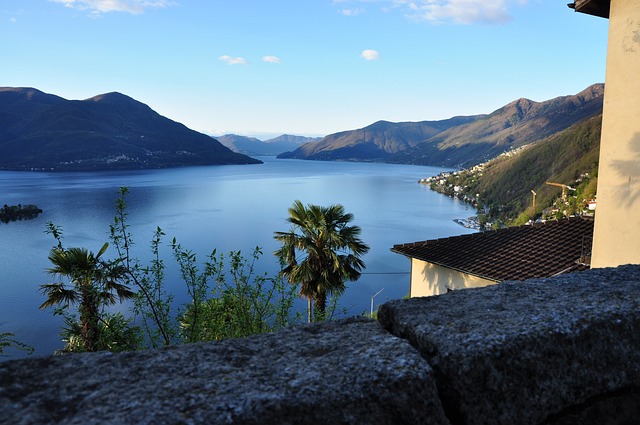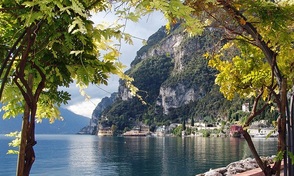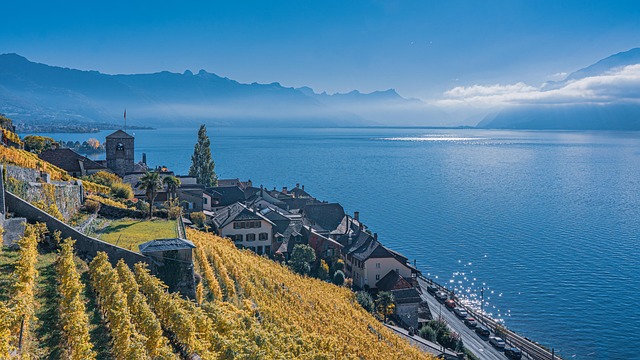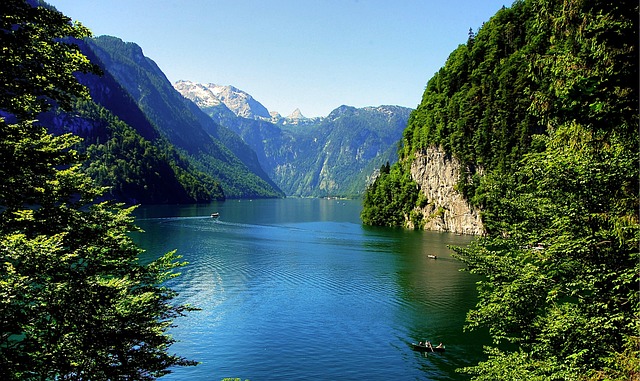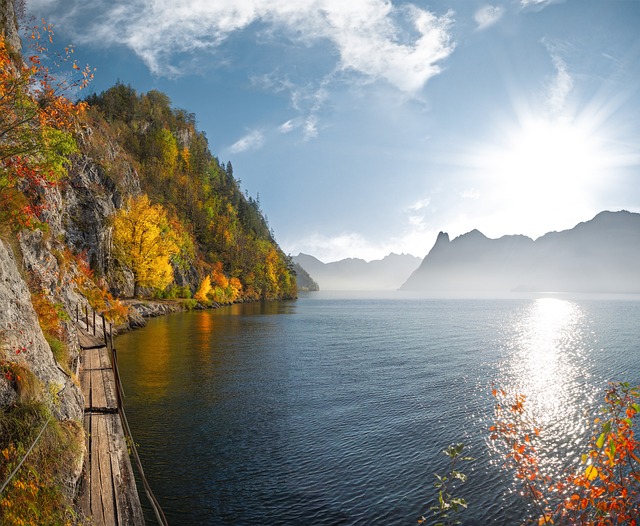THESIS: ALPINE LAKES WERE MINES OF
PREHISTORY
The Alpine lakes were mines of prehistoric times
1. because some Alpine lakes are incredibly deep, but hardly
wide
2. because not all valleys have Alpine lakes
3. because the Alps have hardly any minerals, but the
mountains ranges on other continents have many
4. because the Alps have many lakes, but other mountain
ranges in Asia and in "America" have almost NO lakes.
Hello,
I looked up the depth figures, you can use Wikipedia for
this basic data. And it turned out that the narrow Lake
Maggiore is the deepest lake (372m), then comes Lake Garda
(346), and the large Lake Geneva is only third in depth
(310m), and the tiny King Lake (Königssee) in Germany is a
total surprise with a depth of 190m. The narrow lakes Lake
Zug (198m), Lake Lucerne (214m), Lake Thun (217m) and Lake
Brienz (261m) also seem absolutely abnormally deep (Swiss
munitions are dumped deep there and nobody wants to bring
them up, so this was the impetus for talking about the depth
of the lakes). And in Austria: the relatively small lakes
Attersee (169m deep) and Traunsee (191m deep) also seem
absolutely abnormally deep.
Informant Paul Blaser from Beatenberg (on Lake Thun) gave me
the information today, April 13, 2025, that something cannot
be right, that
1. Other existences of prehistoric times may have already
extracted minerals here and THAT is why the Alps NO longer
have large mineral deposits.
2 And now comes my conclusion: If the glaciers had “scooped
out” these lakes, then ALL Alpine valleys should have such
Alpine lakes, but they don't.
3. It is now also clear why the Alps have almost no
minerals, but the other large mountain ranges in Asia and
“America” do: the minerals in the Alps were “harvested” in
an earlier epoch.
4. Moreover, the great mountain ranges in Asia and “America”
hardly have this large number of such lakes in the
mountains.
Therefore, my suspicion hardens more and more: The alpine
lakes are mines of the prehistory of another civilization -
and in Africa, “America”, and Asia this prehistoric
civilization was apparently not present, the minerals are
still there and are now being consumed by our civilization.
The list (not exhaustive):
Checkup: How deep are the largest lakes in
Switzerland?
up to 100m deep
Lake Biel: average depth: 29m - maximum depth: 74m (link)
over 100m deep
Lake Zurich: average depth (German version): 51.7m - English
version: 49m - maximum depth: 136m (link)
Lake Neuchâtel: medium depth: 64,2m - maximum depth: 153m -
English version: 152m (link)
Lake Zug: medium depth: 83,2m - maximum depth: German version:
198m - English version: 197m (link)
over 200m deep
Lake Lucerne: medium depth: 104m - maximum depth 214m (link)
Lake Thun: medium depth: 136m - maximum depth 217m (link)
Lake Constance: average depth: 90m - maximum depth: 251.14m (link)
Lake Brienz: average depth 173m - maximum depth: German
version: 261m - English version: 260m (link)
Lake Lugano (Italy and Switzerland): medium depth: 134m -
maximum depth: 288m (link)
over 300m deep
Lake Geneva (France and Switzerland): average depth 153m -
maximum 310m (link)
Lake Maggiore (Italy and Switzerland): average depth: 177,4m -
maximum depth: 372m (link)
QUESTION: Are these lake depths normal? or was digging done
here in previous ages?
Alpine lakes elsewhere: Italy /
Switzerland+Italy
up to 100m deep
Lago di Varese (Italy): average depth: German version: 10.7m -
English version: 11m - maximum depth: German version: 26m -
English version: 23m (link)
over 200m deep
Lake Lugano (Italy and Switzerland): medium depth: 134m -
maximum depth: 288m (link)
over 300m deep
Lake Garda (Italy): average depth: German version: 133.3m -
English version: 136m - maximum depth: 346m (link)
Lake Maggiore (Italy and Switzerland): average depth: 177,4m -
maximum depth: 372m (link)
Alpine lakes elsewhere: France /
Switzerland+France
Lac Annecy (France): average depth: 41m - maximum depth: 82m (link)
Lac du Bourget (France): average depth: 80.9m - maximum depth:
145m (link)
Lake Geneva (France and Switzerland): average depth 153m -
maximum 310m (link)
Alpine lakes elsewhere: Germany
up to 100m deep
Lake Waging (Waginger See): average depth: 13.7m - maximum
depth: 27.0m (link)
Lake Tegern (Tegernsee): average depth: 36.3m - maximum depth:
72.6m (link)
Lake Chiem (Chiemsee): average depth: 25.63m - maximum depth:
73.4m (link (German
version) - the English version has no depth
indicated)
Lake Ammer (Ammersee): average depth: German version: 37.5m -
English version: 37.8m - maximum depth: 81.1m (link)
over 100m deep
Lake Starnberg (Starnberger See): average depth: 53.2m (German
version) - maximum depth: 127.8m (link)
King Lake (Königssee): average depth: 98.1m - maximum depth:
190.0m (link)
Alpine lakes elsewhere: Austria
up to 100m deep
Moon Lake (Mondsee): average depth: 36m (German version) -
maximum depth: 68m (link)
over 100m deep
Wolfgangsee: average depth: 50.8m - maximum depth: German
version: 112.9m - English version: 114m (link)
Lake Hallstatt: average depth: 65m (German version) - maximum
depth: 125m (link)
Lake Atter (Attersee / Kammersee): average depth: 85m -
maximum depth: 169m (link)
Lake traun (Traunsee): average depth: 95m - maximum depth:
191m (link)
QUESTION: Are these lake depths normal? or was digging done
here in previous ages? Research is missing!
Sources
Photo sources
[1] Switzerland+Italy: Lake Maggiore up to 372m deep,
suspected prehistoric mine:
https://pixabay.com/de/photos/die-nadel-lago-maggiore-natur-blau-3523649/
[2] Italy Lake Garda up to 346m deep, suspected
prehistoric mine:
https://www.canva.com/design/DAGkloYeZWw/6hnMs0kVkL5RA6K-6BqLlg/edit
[3] Switzerland+France: Lake Geneva up to 310m deep,
suspected prehistoric mine:
https://pixabay.com/de/photos/lavaux-genfer-see-schweiz-6763006/
[4] Switzerland+Italy: Lake Lugano up to 288m deep,
suspected prehistoric mine:
https://pixabay.com/de/photos/lugano-tessin-san-salvatore-wasser-3272123/
[5] Germany the small King Lake (Königssee) up to 190m
deep, suspected of prehistoric mine:
https://pixabay.com/de/photos/königssee-malerwinkel-bayern-natur-2522545/
[6] Austria Traun Lake (Traunsee) up to 191m deep,
suspected prehistoric mine:
https://pixabay.com/de/photos/see-traunsee-österreich-herbst-2893792/


